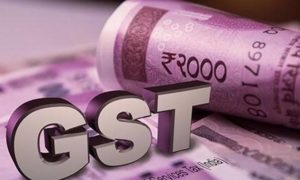Despite the near-saturation in enrolment of government employees, the subscriber base under NPS rose by 16% on year to 70.69 million as of January 13.
Aided by favourable market conditions, the assets under management under the National Pension System (NPS) including Atal Pension Yojana rose about 28% on year to Rs 11 trillion as of January 13 this fiscal, and are poised to reach Rs 12 trillion by March 31, Pension Fund Regulatory and Development Authority Chairman Deepak Mohanty said on Friday.
Also Read– Donations For Ram Mandir Now Eligible For Income Tax Deduction
Despite the near-saturation in enrolment of government employees, the subscriber base under NPS rose by 16% on year to 70.69 million as of January 13. As many as 7.44 million new subscribers have been added so far in the current financial year.
The average returns generated by pension funds under NPS have been very attractive. Equities have given 26.94% in one year and 13.3% since inception. The average annual returns since inception have been 9.06% in corporate bonds, 8.62% in government securities, 9.46% in the central government scheme and 9.32% in the state government scheme, Mohanty said.
Read More: PM Modi Prays At Rameswaram Temple, Takes Holy Dip In ‘Angi Theerth’ Beach
“These are competitive returns compared to what we see in the market,” Mohanty said. “Assets under management should reach Rs 12 trillion by the end of the current financial year,” he said. The AUM was at Rs 8.98 trillion as of March 31, 2023. AUM would need to grow by 33.6% to reach the target set for March 2024.
A few states that have issued a notification to pull out of the NPS to revert to the old defined pension system (OPS) continued to contribute to the NPS irrespective of the on-paper withdrawal.
Read More: IndusInd Bank Q3 Net Profit Rises 17% to Rs 2,301 Crore
“We are roping in regional rural banks to sell NPS in all their branches across the country. We also have a relaxed point of presence regulation to make it easier for onboarding individual agents and corporate agents for NPS,” Mohanty said.
With the government sector saturated, PFRDA is making efforts to rope in corporates to enroll their staff under NPS. As against the target of 1.3 million new private sector subscriber enrollments in FY24, nearly half has been achieved and the rest are likely to be achieved by the end of FY24, he said.
According to the extant NPS norms, a maximum of 60% of the accumulated NPS corpus from contributions during a person’s working years is allowed to be withdrawn tax-free at the time of retirement. The subscriber has to invest a minimum of 40% of the corpus in annuities for a regular pension.
However, it is not a guaranteed pension as returns are linked to markets. Annuities could fetch 5% to 7% return per annum depending on the choices made by the subscriber with single-life annuities giving higher returns as the corpus is not returned by the fund manager after the death of the pensioner.
Given that the NPS system is giving good returns, the NPS subscribers can stay invested in the NPS till they turn 75 years under the Systematic Withdrawal Plan (SWP) and draw monthly or quarterly or annual basis depending on their requirements.
Beneficiaries can also defer their annuities (minimum 40% of the corpus) till the age of 75 to get a substantially higher monthly pension by letting the corpus grow in NPS. The government subscribers can convert their NPS account to private and continue to contribute to NPS even after retirement if they want to till the age of 75 years.





































